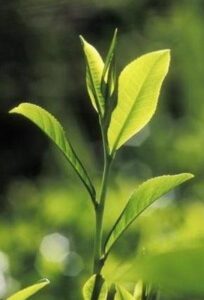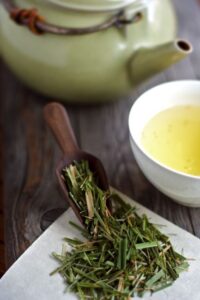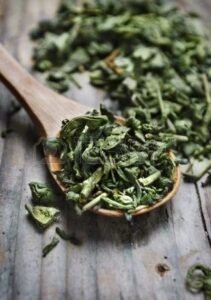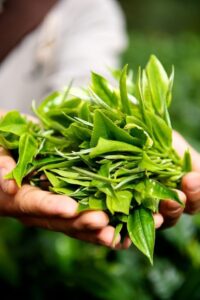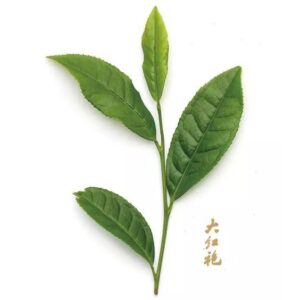
- Whole Tea Leaf Grade
Whole tea leaves are generally regarded as high-quality and are further divided into four sub-grades: – Young Leaves: The topmost, young leaf of the tea plant, considered the highest quality. – First Pair of Tea Leaves: Slightly larger and of lower quality than young leaves. – Pekoe: Thick and twisted leaves. – Pure Souchong: Large, tough, and coarser leaves, often rolled into balls that expand when brewed, revealing their shape.
- Broken Tea Leaf Grade
Tea leaves that do not meet the whole leaf grading are processed further. These broken leaves undergo fermentation and roasting, and are often used in tea blends. Broken tea leaves release color quickly when brewed and are popular for their affordability and ease of use. The flavor, color, and aroma depend on the processing method of each manufacturer.
- Powdered Tea Leaf Grade (Fine Leaf Teas)
This grade consists of the smallest tea particles left over from grading. Powdered tea releases its color almost instantly when brewed, making it popular for quick tea preparation. Like broken leaf tea, the flavor depends on the manufacturer.
While tea leaf size does influence the brewing process, it doesn’t solely determine the quality or flavor of the tea. The part of the tea plant from which the leaf is harvested, such as the buds or larger leaves, plays a significant role in flavor. Large tea leaves may result in a milder brew due to their increased surface area, which reduces extraction efficiency. Conversely, even the finest tea buds can produce lower-quality tea if not handled correctly during production.
Tea Harvesting
Harvesting is a critical factor in producing high-quality tea. The best tea leaves are harvested as 1 bud and 2 leaves, typically from March to November, with tea buds collected every 10 days. The ideal time to harvest is from 5:00 AM to 2:00 PM to prevent bruising and overheating, which can degrade the tea’s quality. The harvested leaves should reach the factory within 3-4 hours.
Storing Tea Leaves
Proper storage is essential for preserving the aroma, color, and flavor of tea leaves. Tea should be stored in a dry, odorless, and airtight container to prevent exposure to humidity, temperature fluctuations, and strong odors. Even if harvested and processed perfectly, improper storage can negatively affect the tea’s quality.
Source:
https://www.pinterest.com/pin/491596115580846654/
http://www.taotealeaf.com/da-hong-pao-oolong-tea-premium/
บทความ : Fuwafuwa

